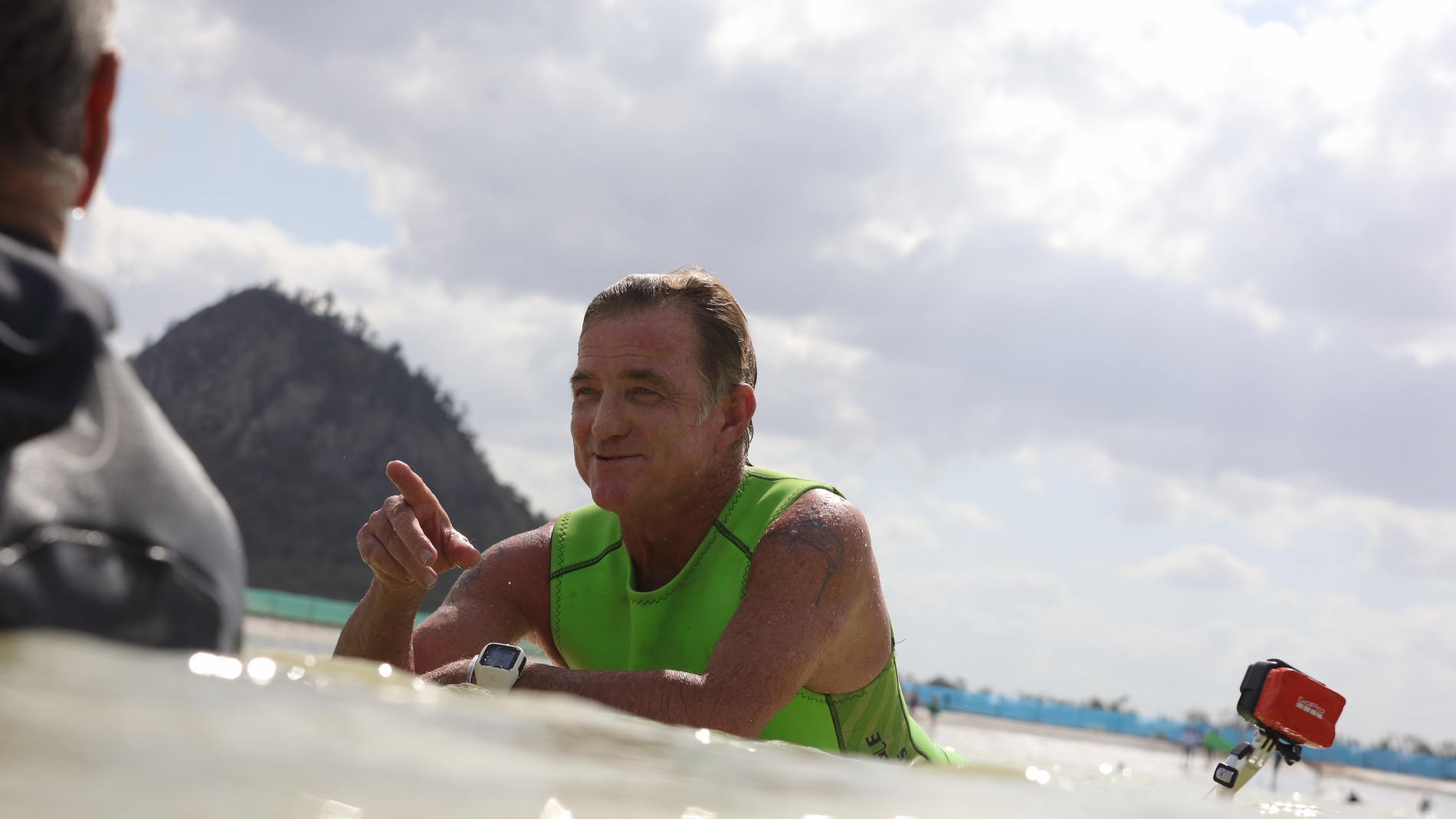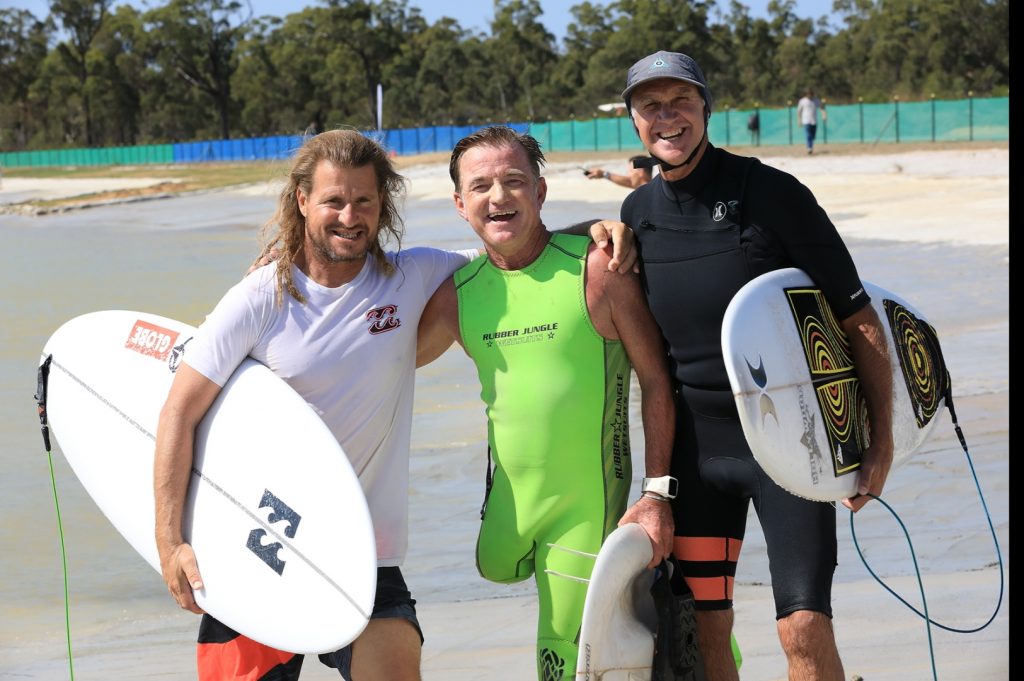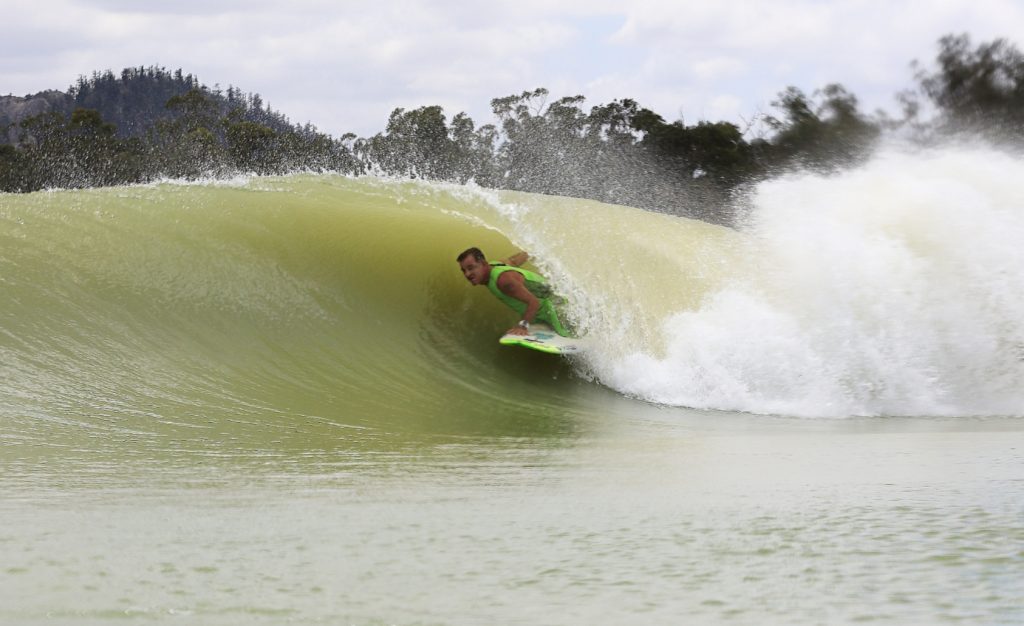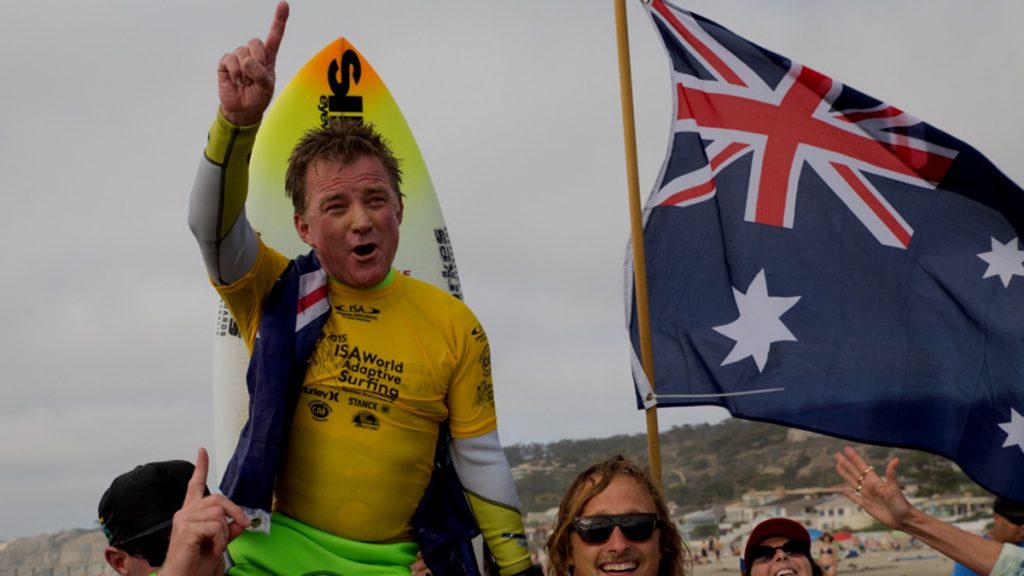Mark ‘Mono’ Stewart: Why wave pools will change everything in adaptive surfing

Mark Mono Stewart is the Kelly Slater of adaptive surfing. Despite being dad-age to many of his peers, he keeps bagging event wins and championship titles. In September 2015, at the age of 53, he won the inaugural ISA World Adaptive Surfing Championship in California. He went on to repeat the following year – almost 40 years after losing his leg to cancer.
Mono is part of a growing feel-good world tour of roughly nine events supported by a handful of NGOs around the world. He estimates that 50-120 athletes tour consistently, all on their own dime. His native Australia will host the nation’s first adaptive event and open it to international surfers.
As this tour grows, providing more divisions, more events and bigger cash prizes, wave pools will enter the picture, providing guaranteed surf and athlete access for a few events.
Mono tells us that the whole mojo behind the adaptive surf tour goes beyond the gloss of a corporate blanket. Instead, the system is supported by smaller groups like Ampsurf, Stance and the ISA. The tour’s main aim is to get people with similar adaptive challenges back into the water or into surfing for the first time. And this is where wave pools come in. Pools help at the surf-entry level. People feel safe in a controlled environment.
As Mono puts it, “The hardest thing after losing a limb is that fear. The ocean is such a big playing field. It’s easier to get someone surfing in a wave pool and then get them into the ocean. The ocean is such a healing place. And wave pools are a great introduction or re-introduction.”

How big is the adaptive circuit?
It’s probably one of the quickest growing sports. There were nine events last year. 50-120 athletes who do the circuit globally compete in eight different classifications running across surfing in standing position, prone position and vision impairment.
What are the competitions like? At the Welsh titles commentator Lee Bartlett said he’d never been to an event where everyone is so happy, even the surfers who came in last.
The events are like no other comp in the world and at the end of the day, everyone’s on such a high because of the feedback and the positivity. It’s just phenomenal. Nothing holds these surfers back and it’s just such a good vibe.
How will pools play in the growth of the sport?
Snowdonia opened their facility for the Welsh championships and it blew me away. It blew everyone away. And when I came home it changed my plans entirely. Just to be able to go to bed the night before the comp and know you’ll get pumping waves the next day.
Are surf parks being designed for adaptive surfers?
Bristol got a couple of adaptive surfers to make sure they got the facility right. Nick Hounsfield was so supportive and got guys to make sure things like the ramps to get wheelchairs into the water were working. Because a lot of the adaptive community has to get out of their chairs and then drag themselves across the beach to get to the surf. Nick put permeable surfaces in. At Surf Lakes, I went and toured the site and spoke with the guys. there. They asked us what they could do to make the facility useful for adaptive surfers.

Will wave pools will be incorporated into the adaptive tour?
At the end of the day, it’s not the ocean, but it’s close. Adaptive surfers like any other competing athletes want the best surfers to win. And having an event in a wave pool allows the best surfers to win. For me, wave pools are great because all the work is about getting people into the surf who might not feel comfortable initially. And wave pools help get people back into the water to surf after an incident that compromises their ability. With wave pools, we can make the transition back to the ocean more easily.
Can you elaborate on what wave pools provide that the ocean doesn’t?
Safety to a person who’s just lost a leg, it’s imperative to make them feel safe. And to put them straight back into the ocean, it’s a pretty big call. So if we can start them off in a pool it makes the transition to ocean surfing or back to ocean surfing easier.
What are some of your goals?
We can inspire people to get more involved. Most people know someone with a disability. There are 750,000 amputees in America alone. That’s a phenomenal number of people. We need something like surfing where it’s a healthy sport and at the end of the day it’s a cheap sport. When I lost my leg we had nothing. No internet. No mobile phones. I want to be able to get there and set things up and give people a stepping stone to set things up to get into the water.

In our video clip, you talk about the magic of surfing. Can you explain that a bit more?
Surfing’s kept me alive and kept me inspired — it’s good for the body as well as the soul. It’s such a leveler. You can surf with people and they don’t even realize you’ve got one leg until you get out of the water. A prime example is when I was in Indonesia. This mom and these two young groms came up to me and one says “look if I ever lose a leg, I want to surf just like you.” And the mom started crying and it was just one of those amazing moments. But I want those kids to know that if something happens to them or they know someone that this happens to and their lying in hospital after an accident that might keep them from surfing, they will say to themselves “hang on, we know that guy without a leg we met in Bali. I can do this.”
We can encourage people to get back into the water because surfing has such healing power. I’m surprised by the number of people that tell me, I’ve got a cousin who just lost his leg and then I let them know about this group or that. And now with wave pools, there are more options out there.
For more on the world of adaptive surfing, check out the links below:
International Surfing Association
Disability Sports Australia – Adaptive
Related Coverage
